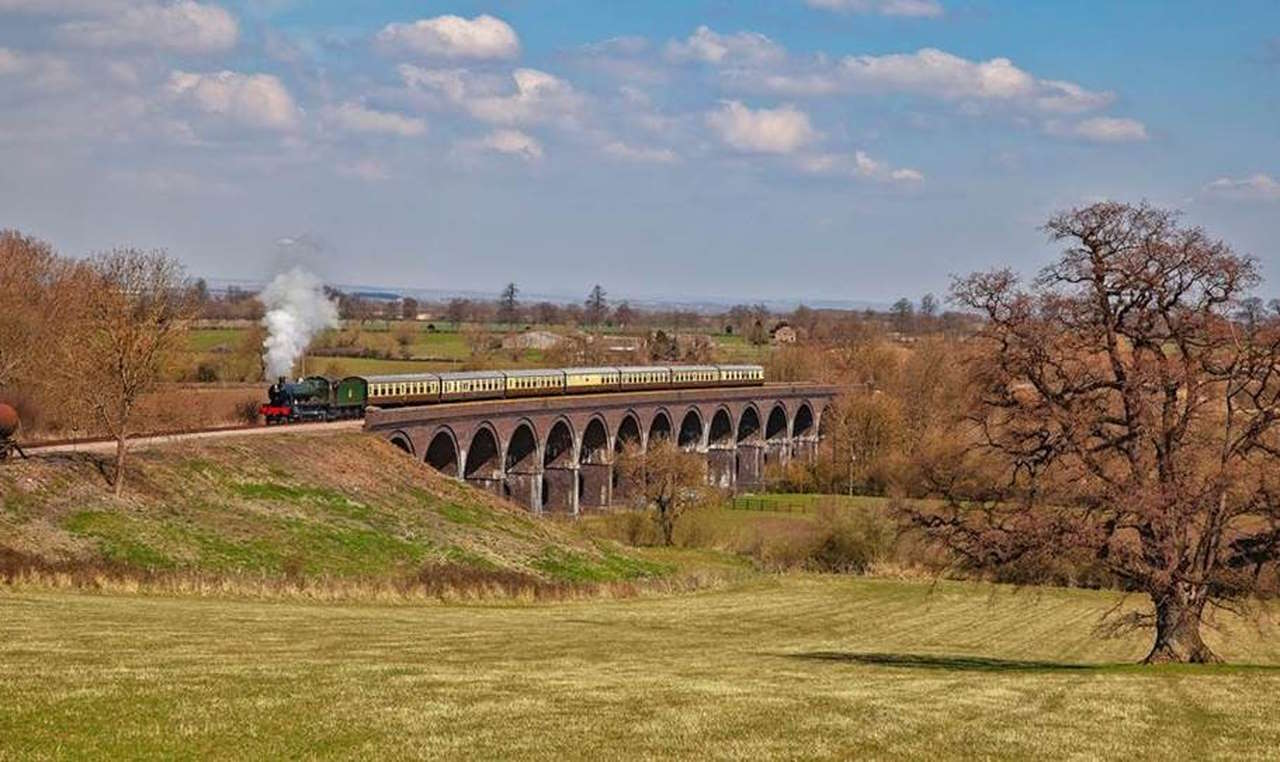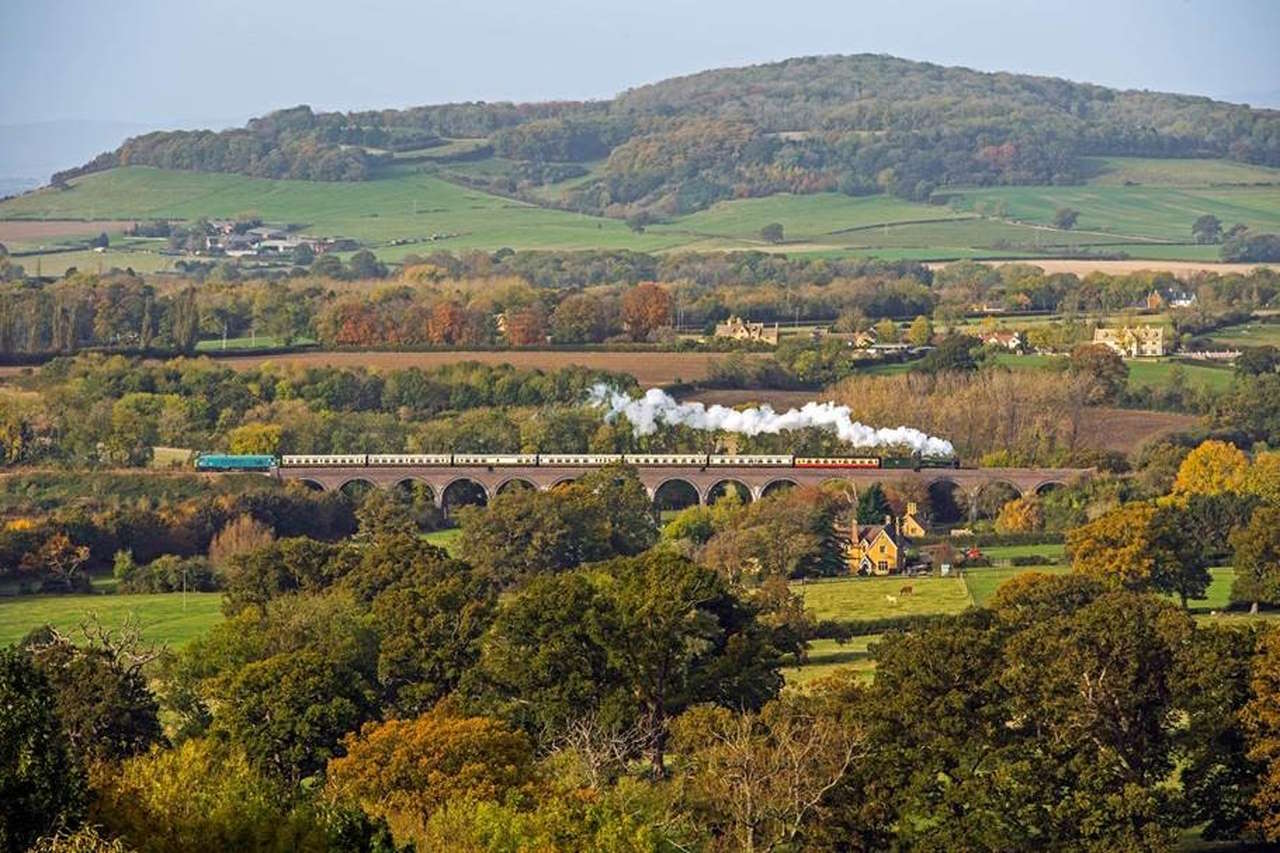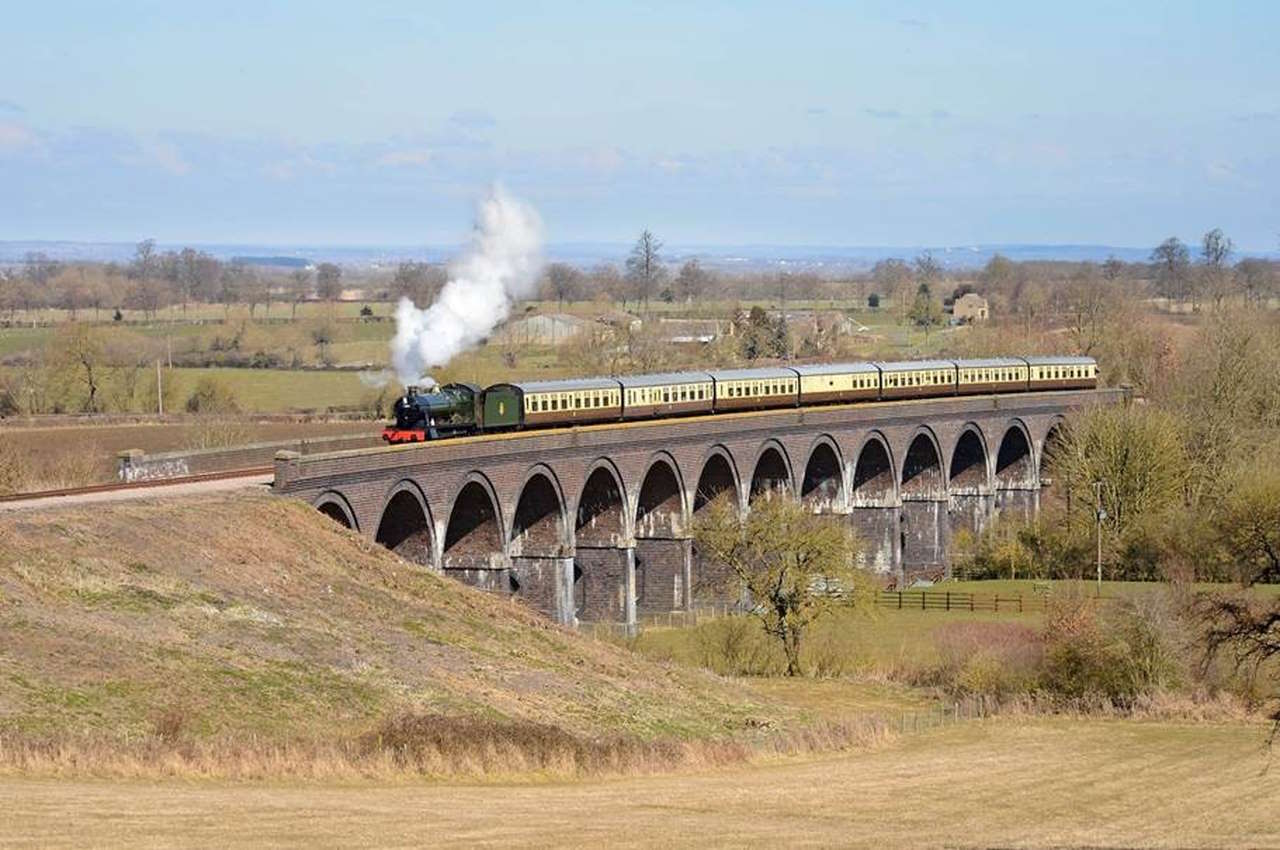The Gloucestershire Warwickshire Railway Trust (GWRT) has launched an appeal to raise £1.5m to undertake urgent repairs to the iconic 120-year-old Stanway Viaduct.
The structure has carried passengers through the valley between Toddington and Broadway since 1904. GWRT is an independent charity which aims to support and maintain the Gloucestershire Warwickshire Steam Railway as a living museum.
The fifteen-arch brick-built structure has been suffering from the effects of water penetration over many decades. The GWRT appeal hopes to address the structural problems in two phases: installing a new waterproof layer and repairing brickwork subsequently damaged by water ingress. This work is vital to prevent continued deterioration of the structure, which if left unchecked would leave the viaduct no longer able to safely carry the railway’s trains, which would sever the link to Broadway and result in trains having to terminate at Toddington.

Stanway Viaduct – a brief history of the structure
Stanway Viaduct is the largest and most iconic structure on the Gloucestershire Warwickshire Steam Railway. The gently curving viaduct was built for double track use in 1903 using Staffordshire blue brick and is 656 feet (200 metres) long with fifteen arches. It is almost 50 feet (15 1/4 metres) high at its highest point above the valley it spans.
Local trains from Stratford and Honeybourne to Cheltenham and Gloucester crossed the viaduct from around 1904 to 1960 when they were withdrawn and station platforms demolished. Through trains from the Midlands to the West Country crossed the viaduct between 1908 and 1968. The line remained open for freight and diverted passenger trains until 1976.
After the closure of the line in 1976, the track was removed from the viaduct in 1979. In 2005, the Gloucestershire Warwickshire Steam Railway (GWSR) began re-laying the track and in November that year, an engineering train became the first to cross the viaduct since closure. The first GWSR passenger train crossed the viaduct in 2010, when the railway opened as far as Laverton. Through hard work and determination of GWSR volunteers, the railway finally reached Broadway in 2018.

Stanway Viaduct – the structural problem
Dr Graham Plant, GWSR plc Civil Engineering Director, explains that, “The viaduct carries static and dynamic loads via the brick arches acting in compression and then transferring those loads to the piers and hence to their foundations. The structure was built including a waterproofing layer of asphalt below the ballast. Water percolating through the ballast should enter catch pits and then via drainage pipes exiting within the arch soffits.
In 2020 the catch pits and drain pipes were cleaned out and the stone around them replaced but funds were not available to undertake more extensive works. Recent evidence shows that the waterproof layer has failed and so the structure has suffered from the effects of water penetration over many decades especially on the brick piers causing some spalling.
Brickwork on half of Pier 8 was repaired in 2021. The brickwork of Piers 5, 6 and 7 together with associated adjacent spandrels was repaired, with a grant from GWRT, in 2022. All these repairs to brickwork are necessary to maintain the viaduct’s strength.
However, whilst this work is essential it is not addressing the root cause of water penetration from above. This will only be achieved with a new waterproof layer under the track ballast. Providing this new waterproof layer, at an estimated cost of £300,000, will form Phase 1 of the project.”
This requires the track and ballast to be removed; the deck to be cleaned; a concrete layer placed to ensure water flows towards the catch pits; the application of two waterproofing layers together with protection; and then replacement of the ballast and track.
Phase 2, which if funding allows could start as early as 2023, is to commence the repair of all the brickwork for the whole structure. This includes the remaining nine piers, associated spandrels, the balance of pier 8, the arch soffits and the parapets. These works cannot easily be carried out in a single year as they require skilled bricklayers, so the intention is to spread the work over about three years. A particular, and expensive, challenge is to provide safe access for the bricklayers to reach all parts of the structure. The estimated cost of this work on the viaduct’s brickwork is £1.2m over the three years, giving a total estimated project cost of £1.5m to be raised by GWRT via this public appeal.

Every donation, big or small, will help preserve this historic monument. Donations can be made either through the online donations portal on the GWRT website, by visiting the Trust Office at Toddington station, or by filling out an appeal leaflet.
All monies donated to the Viaduct Appeal will be held by GWRT in a restricted fund, used to pay out against invoices provided by contractors to the GWSR plc. GWRT is an independent charity which aims to support and maintain the Gloucestershire Warwickshire Steam Railway as a living museum.
In the event that the appeal raises funds exceeding the target of £1.5m, any remaining balance following work completion will be ringfenced for other infrastructure work on the railway. If less than the target funding is achieved, the focus of the repairs would be on Phase 1 (the waterproofing), as this will prevent further deterioration of the viaduct structure.
The remedial work on the viaduct will be carried out by specialist contractors working for GWSR plc, except for the track work, which will be undertaken by the railway’s track volunteer maintenance team.
Philip Young, GWRT Chairman, commented: “The Stanway Viaduct is an integral part of the living museum and we are therefore delighted to be able to run this appeal in support of the GWSR. I would like to thank everyone who is able to donate, however small, as your generosity will help us secure the future of this iconic structure. If you are a UK tax payer, please consider adding Gift Aid to your donation.”
Richard Johnson, GWSR plc Chairman, commented: “The necessity of securing funding to undertake the necessary remedial work to this structure is apparent from the detail above and statements made by our Civil Engineering Director. We cannot delay; the work needs to be undertaken as soon as possible so please do support the appeal.”






Responses
I just hope that they (|the gloucestershire-warwickshire railway) shall successfully accomplish their vitally urgent appeal in hopefully repairing & extra strengthen the whole entire 15-arch viaduct infrastructure to continue in it’s forever ongoing role in carrying the preserved line across the landscape valley in which it spans en-route out there.
Never underestimate the power of a contractor to extract money from a client.
The Luton airport link went overbudget and that was for a project that was for all new works.
Renovation is extremly difficult to estimate accuractly. Contractors price to make jobs seem affordable. The price rapidly increases with all the “extras” which soon surface once the contract has been signed.